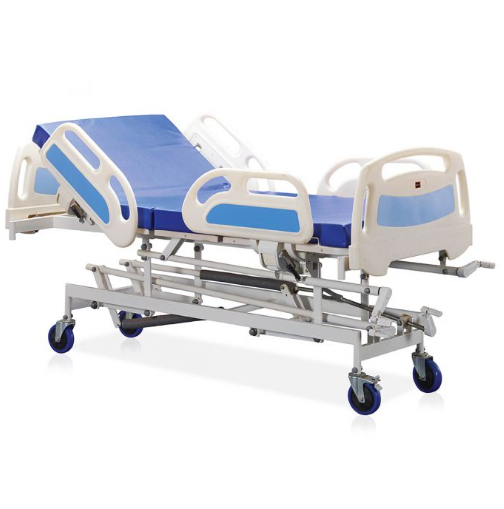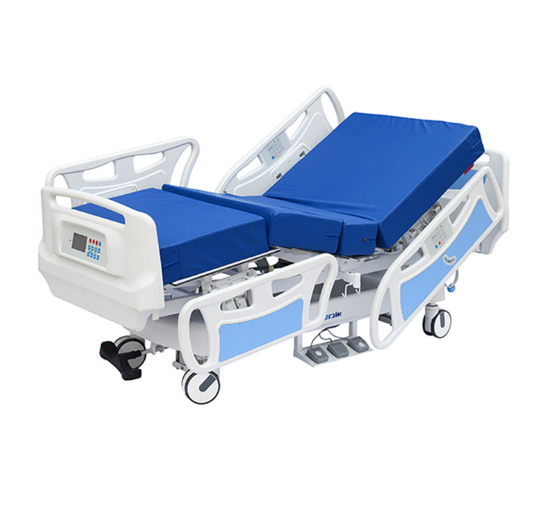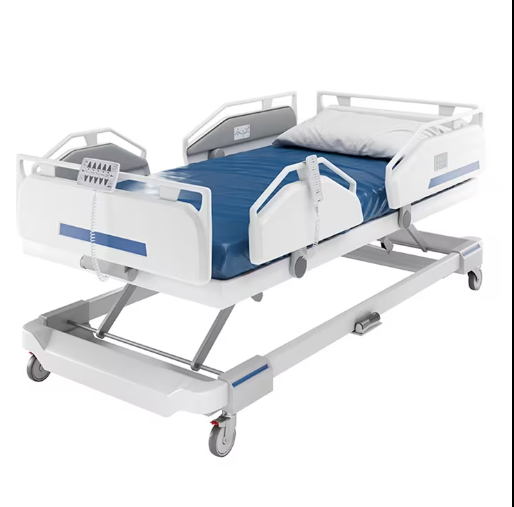Hospital beds are specialized pieces of medical equipment designed to provide comfort, support, and mobility for patients in healthcare facilities. These beds come in various categories and types, each serving specific purposes to meet the diverse needs of patients. Here’s a description of hospital beds, including categories and hi-tech automated bed types:
1. General Ward Beds:
- Description: General ward beds are the most common type of hospital bed and are found in general patient care areas. They are typically manually adjustable and feature a simple design with adjustable head and foot sections. They provide basic comfort and support for patients during their hospital stay.
- Features: Adjustable head and foot sections, side rails for patient safety, and manual height adjustment.
2. ICU Beds (Intensive Care Unit Beds):
- Description: ICU beds are designed for critically ill patients who require specialized care and constant monitoring. These beds are highly adjustable and equipped with advanced features to accommodate various medical interventions and equipment.
- Features: Electric adjustment of bed height, head, and foot sections, advanced cardiac monitoring capabilities, integrated scales, and compatibility with medical equipment such as ventilators and infusion pumps.
3. Pediatric Beds:
- Description: Pediatric beds are designed specifically for children and infants. They feature a smaller size and a child-friendly appearance to create a more comfortable and welcoming environment for young patients.
- Features: Pediatric-themed designs, safety features tailored to children’s needs, and adjustable positions for pediatric care.
4. Bariatric Beds:
- Description: Bariatric beds are designed to support and accommodate patients who are obese or have a higher weight capacity. These beds are reinforced and wider to ensure patient safety and comfort.
- Features: Higher weight capacity, extra-wide frame, and reinforced construction.
5. Obstetric Beds (Labor and Delivery Beds):
- Description: Obstetric beds are designed for maternity and labor and delivery units. They provide comfort and support to expectant mothers during labor, childbirth, and postpartum recovery.
- Features: Adjustable positions for labor, birthing, and postpartum recovery, stirrups for gynecological exams, and ease of access for medical staff.
6. Hi-Tech Automated Bed Types:
- Description: Hi-tech automated hospital beds are equipped with advanced electronic systems and features that enhance patient care, comfort, and safety. These beds are often found in critical care units and are capable of integrating with various medical equipment and monitoring systems.
- Features: Electric adjustment of bed height, head, and foot sections, integrated patient monitoring systems, bed exit alarms, pressure redistribution surfaces (e.g., air mattresses), and automatic turning and positioning for pressure ulcer prevention.
7. Home Care Beds:
- Description: Home care beds are designed for patients receiving care in a home setting. They are typically more compact and may have features that facilitate caregiver assistance.
- Features: Electric or manual adjustment, compact size, and compatibility with home care equipment.
8. Trendelenburg and Reverse Trendelenburg Beds:
- Description: These beds are designed to tilt the patient’s entire bed frame, with the head lower than the feet (Trendelenburg) or vice versa (Reverse Trendelenburg). They are used for specific medical procedures and patient positioning.
- Features: Adjustable tilt positions, often used in surgical or critical care settings.
In summary, hospital beds come in various categories to cater to the diverse needs of patients and medical conditions. Advanced, hi-tech automated beds are becoming increasingly common in healthcare settings, enhancing patient care, safety, and comfort through integrated technology and automation.






